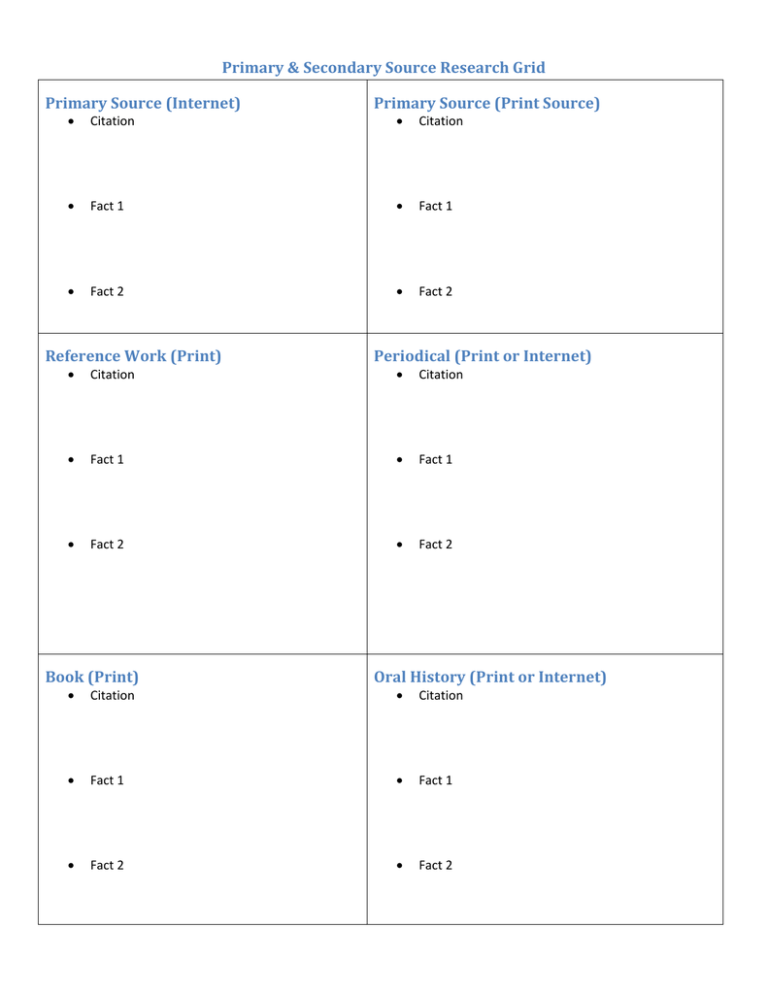Primary & Secondary Source Research Grid
advertisement

Primary & Secondary Source Research Grid Primary Source (Internet) Primary Source (Print Source) Citation Citation Fact 1 Fact 1 Fact 2 Fact 2 Reference Work (Print) Periodical (Print or Internet) Citation Citation Fact 1 Fact 1 Fact 2 Fact 2 Book (Print) Oral History (Print or Internet) Citation Citation Fact 1 Fact 1 Fact 2 Fact 2 Image (Photo, Art, Political Cartoon) Map (Historic or Contemporary) Citation Citation Observation/Fact 1 Observation/Fact 1 Observation/Fact 2 Observation/Fact 2 A primary source is a document, speech, or other sort of evidence written, created or otherwise produced during the time under study. Primary sources offer an inside view of a particular event. Examples include: autobiographies, diaries, e-mail, interviews, letters, minutes, news film footage, official records, photographs, raw research data, speeches. Examples of primary sources: The Declaration of Independence — U. S. history African-American Poetry (Harlem Renaissance) — U. S. history & literature Diary of Anne Frank — experiences of Jews in World War II Film footage of the assassination of President J. F. Kennedy National Security Data Archives — U. S. history declassified documents The following questions are asked about primary sources: What is the tone? Who is the intended audience? What is the purpose of the publication? What assumptions does the author make? What are the bases of the author's conclusions? Does the author agree or disagree with other authors of the subject? Does the content agree with what you know or have learned about the issue? Where was the source made? Secondary sources provide interpretation and analysis of primary sources. Secondary sources are one step removed from the original event. Secondary sources include: Britannica Online Encyclopedia (online), American National Biography (database), literary criticism analyzing a play, poem, novel, or short story, magazine or newspaper articles about events or people, political commentary analyzing an election or politician (via Lexis-Nexis database), textbooks such as Boyer’s American Nation, and Nash’s American People. Note: Textbooks are generally not cited on a bibliography as most teachers/professors “assume” they are being read regularly by students.


